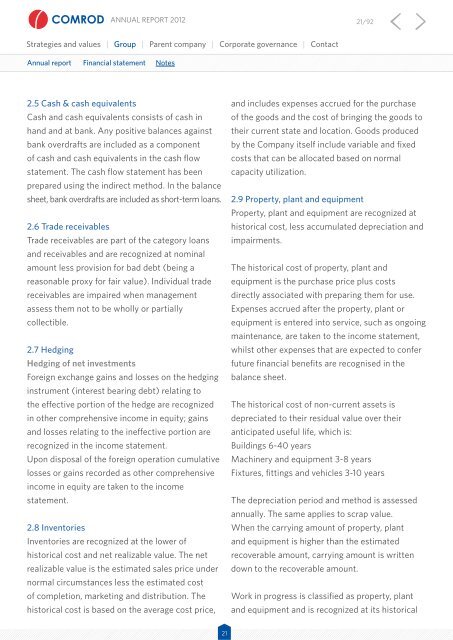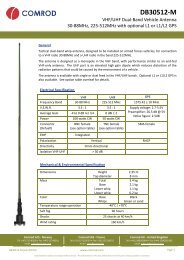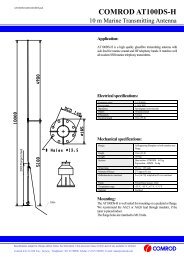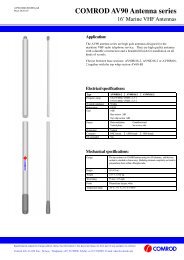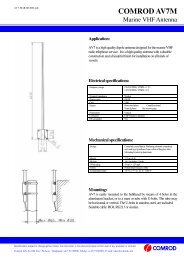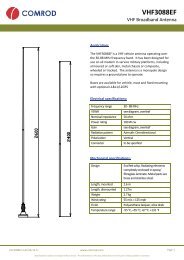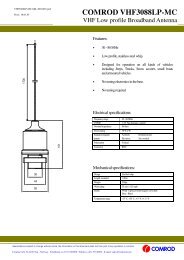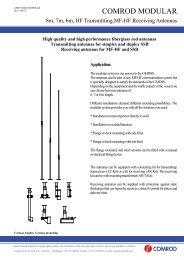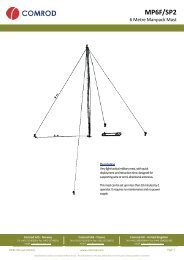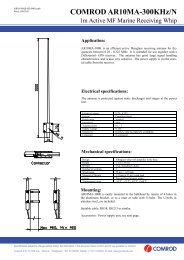Annual report 2012 - Comrod
Annual report 2012 - Comrod
Annual report 2012 - Comrod
Create successful ePaper yourself
Turn your PDF publications into a flip-book with our unique Google optimized e-Paper software.
<strong>Annual</strong> <strong>report</strong> <strong>2012</strong> 21/92Strategies and values | Group | Parent company | Corporate governance | Contact<strong>Annual</strong> <strong>report</strong> Financial statement Notes2.5 Cash & cash equivalentsCash and cash equivalents consists of cash inhand and at bank. Any positive balances againstbank overdrafts are included as a componentof cash and cash equivalents in the cash flowstatement. The cash flow statement has beenprepared using the indirect method. In the balancesheet, bank overdrafts are included as short-term loans.2.6 Trade receivablesTrade receivables are part of the category loansand receivables and are recognized at nominalamount less provision for bad debt (being areasonable proxy for fair value). Individual tradereceivables are impaired when managementassess them not to be wholly or partiallycollectible.2.7 HedgingHedging of net investmentsForeign exchange gains and losses on the hedginginstrument (interest bearing debt) relating tothe effective portion of the hedge are recognizedin other comprehensive income in equity; gainsand losses relating to the ineffective portion arerecognized in the income statement.Upon disposal of the foreign operation cumulativelosses or gains recorded as other comprehensiveincome in equity are taken to the incomestatement.2.8 InventoriesInventories are recognized at the lower ofhistorical cost and net realizable value. The netrealizable value is the estimated sales price undernormal circumstances less the estimated costof completion, marketing and distribution. Thehistorical cost is based on the average cost price,and includes expenses accrued for the purchaseof the goods and the cost of bringing the goods totheir current state and location. Goods producedby the Company itself include variable and fixedcosts that can be allocated based on normalcapacity utilization.2.9 Property, plant and equipmentProperty, plant and equipment are recognized athistorical cost, less accumulated depreciation andimpairments.The historical cost of property, plant andequipment is the purchase price plus costsdirectly associated with preparing them for use.Expenses accrued after the property, plant orequipment is entered into service, such as ongoingmaintenance, are taken to the income statement,whilst other expenses that are expected to conferfuture financial benefits are recognised in thebalance sheet.The historical cost of non-current assets isdepreciated to their residual value over theiranticipated useful life, which is:Buildings 6-40 yearsMachinery and equipment 3-8 yearsFixtures, fittings and vehicles 3-10 yearsThe depreciation period and method is assessedannually. The same applies to scrap value.When the carrying amount of property, plantand equipment is higher than the estimatedrecoverable amount, carrying amount is writtendown to the recoverable amount.Work in progress is classified as property, plantand equipment and is recognized at its historical21


